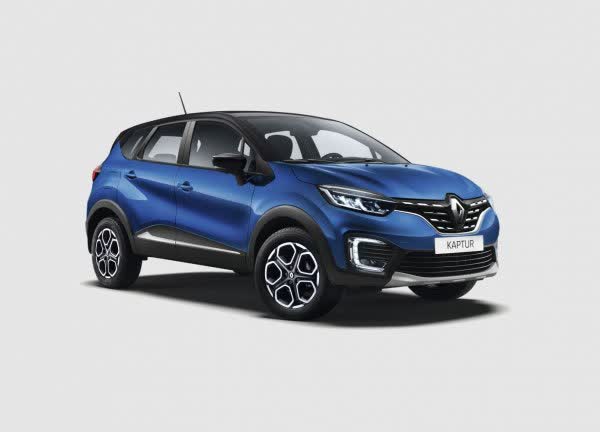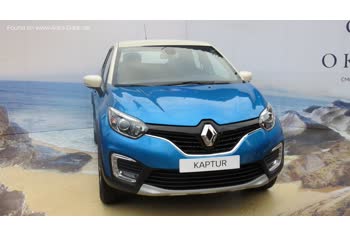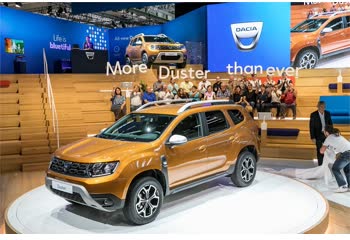Everything you need to know about specifications and performance - Renault Kaptur 2020 - 1.3 TCe (150 Hp) 4x4 CVT X-Tronic

Overview:
What is the engine capacity of a Renault Kaptur 2020?
The engine capacity of the Renault Kaptur 2020 is 1332 cm.
Renault Kaptur 2020 How many horsepower?
The engine power of the Renault Kaptur 2020 is 150 Hp @ 5250 rpm..
What is the Renault Kaptur 2020 engine?
Renault Kaptur 2020 engine is H5H. (Click to see other cars using the same engine)
How much gasoline does a Renault Kaptur 2020 consume?
The Renault Kaptur 2020 consumes 7.4 liters of gasoline per 100 km
General:
Brand: Renault
Model: Kaptur
Generation: Kaptur (facelift 2020)
Modification (Engine): 1.3 TCe (150 Hp) 4x4 CVT X-Tronic
Start of production: May, 2020
End of production:
Powertrain Architecture: Internal Combustion Engine
Body type: Crossover
Seats: 5
Doors: 5
Engine:
Engine systems: Start & Stop System
Power: 150 hp @ 5250 rpm.
Power per litre: 112.6 hp/l
Torque: 250 nm @ 1700 rpm.
Engine Model/Code:H5H
Engine displacement: 1332 cm
Number of cylinders: 4
Engine configuration: Inline
Number of valves per cylinder: 4
Fuel injection system: Direct injection
Engine aspiration: Turbocharger, Intercooler
Engine layout: Front, Transverse
Cylinder Bore: 72.21 mm
Piston Stroke: 81.41 mm
Compression ratio: 10.5
Performance:
Fuel Type: Petrol (Gasoline)
Fuel consumption (economy) - urban: 9.4 l/100 km
Fuel consumption (economy) - extra urban: 6.1 l/100 km
Fuel consumption (economy) - combined: 7.4 l/100 km
Emission standard: Euro 5
Acceleration 0 - 100 km/h: 10.4 sec
Acceleration 0 - 62 mph: 10.4 sec
Maximum speed: 188 km/h
Weight-to-power ratio: 9.4 kg/Hp, 106.1 Hp/tonne
Weight-to-torque ratio: 5.7 kg/Nm, 176.8 Nm/tonne
Acceleration 0 - 60 mph: 9.9 sec
Space:
Kerb Weight: 1414-1435 kg
Max. weight: 1883 kg
Max load: 448-469 kg
Trunk (boot) space - maximum: 1200 l
Trunk (boot) space - minimum: 387 l
Permitted trailer load with brakes (12%): 1200 kg
Fuel tank capacity: 50 l
Permitted trailer load without brakes: 740 kg
dimensions:
Length: 4333 mm
Width: 1813 mm
Height: 1613 mm
wheelbase: 2673 mm
Front track: 1564 mm
Rear (Back) track: 1570 mm
Front overhang: 850 mm
Rear overhang: 808 mm
Ride height (ground clearance): 205 mm
Minimum turning circle (turning diameter): 10.9 m
Approach angle: 20°
Departure angle: 31°
Powertrain, Suspension and Brakes:
Drivetrain Architecture: The Internal combustion Engine (ICE) drives the front wheels permanently, and the rear wheels are driven through an electrically or mechanically operated clutch if necessary.
Drive wheel: All wheel drive (4x4)
Number of gears and type of gearbox: 7 gears, automatic transmission CVT X-Tronic
Front brakes: Ventilated discs, 269x22 mm
Rear brakes: Drum, 229 mm
Assisting systems: ABS (Anti-lock braking system)
Steering type: Steering rack and pinion
Power steering: Electric Steering
Tires size: 215/65 R16; 215/60 R17
Wheel rims size: 16; 17
Front suspension: Independent, type McPherson with coil Spring and anti-roll bar
Rear suspension: Independent multi-link Spring suspension with stabilizer
See also

Other generation.
Its production began in 2016 until 2020

Same engine. (H5H).
Its production began in 2019 until 2021
Write a comment